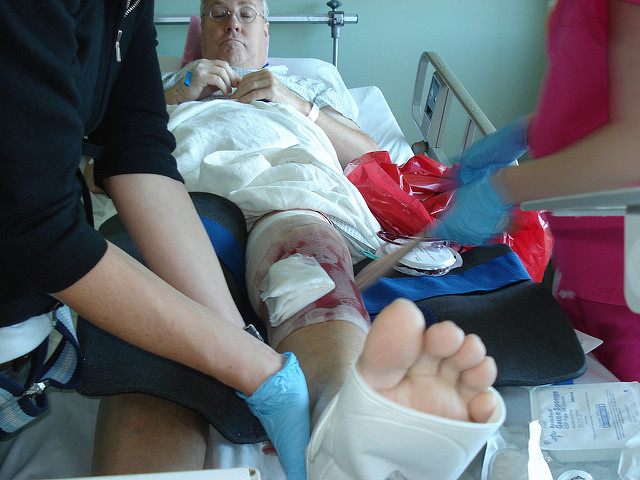On Tuesday, June 12, 2018, a 22 year old woman from Melvin, Michigan was ejected from her vehicle after being struck by a vehicle operated by a 23 year old woman from Roseville, Michigan. According to Click on Detroit, the car accident took place near Joslyn Road in Auburn Hills, Michigan. The driver at fault was operating a 2004 Pontiac Bonneville when she collided with a 2003 Chevrolet Blazer, while driving south on I-75. The impact caused both vehicles to roll down an embankment, at which point the 22 year old car crash victim was ejected from her vehicle. She was transported to McLaren Hospital in Pontiac, Michigan and it’s reported that she sustained serious car accident injuries. The other driver involved in the car crash was not harmed. While further details as to the cause of the car crash have not been released, Auburn Hills police are conducting an investigation into the accident.
For many people, the weekday begins and ends with driving on the highway. Whether it’s the commute to work, school, or other destination, “taking the usual route” can easily become too comfortable, and as a result, cause the driver to become less attentive to the road and other drivers. The reduced vigilance, paired with the fast highway speed limits, may result in dangerous car accidents and serious car accident injuries.
It’s important to be alert, and drive safely whether on a crowded highway or an deserted suburban street. However, due to the dangerous nature of the highway, there are a few extra guidelines drivers should follow to ensure their safety, as well as the safety of other drivers. Below are ten safety tips for highway driving, as suggested by the American Association of Retired Persons (AARP).
Highway Driving Safety Tips
1. Merging: If you accelerate quickly to a proper merge speed, you can safely enter the flow of traffic.
2. Others merging: Change lanes or adjust your speed to allow others to enter the highway safely.
3. Blind spots: Stay out of other drivers’ blind spots.
4. Passing: Use the right lane for entering and exiting the traffic flow. The left lane on highways is for passing. Do not frustrate other drivers behind you by staying in the left lane if you are not passing.
5 Lane changes: Avoid unnecessary lane changes. Check your blind spots by looking over your shoulder before changing lanes. Always use turn signals.
6. Blending with traffic: Blend your speed with the traffic as much as possible without exceeding the speed limit. If you are uncomfortable driving at higher speeds, find an alternate route.
7. Stopped vehicles: Give pedestrians and stopped vehicles, including police and emergency vehicles, a wide berth for their safety, moving over a lane when possible.
8. Backing up: It is illegal to back up on a highway and you may not cross a median. If you miss an exit or need to go back for some reason, do not back up. Proceed to the next exit and then double back.
9. Emergencies: Do not stop on a highway unless you have an emergency. Pull over as far as you can to the shoulder and be sure to turn on your emergency flashers.
10. Emergency vehicles: Move to the right as far as possible to let an approaching emergency vehicle pass you on the left. Do not come to a complete stop as you would on other roads.
If it’s an option, taking the highway may result in less time spent in the car, as compared to driving only on local roads. While highway driving is an efficient choice for drivers, there is always a chance that a car accident may occur. That's why having knowledge on these extra highway driving guidelines may help prevent car accidents. Following these tips don't guarantee that accident's won't occur, but the AARP’s ten tips are a great safety refresher for all drivers, including beginners and experienced drivers alike.
Although the cause of the crash on Tuesday has not yet been disclosed, it’s a reminder of the danger highway car accidents pose. The AARP’s ten highway driving safety guidelines are simple to follow, and may help drivers stay protected while driving on the highway. If you or someone you know has been the victim of an automobile accident, call The Michigan Law Firm, PC at 844.4MI.FIRM for a free legal consultation. Our team of accident attorneys are here to help car accident victims identity and receive any benefits they may be entitled to under Michigan law.







